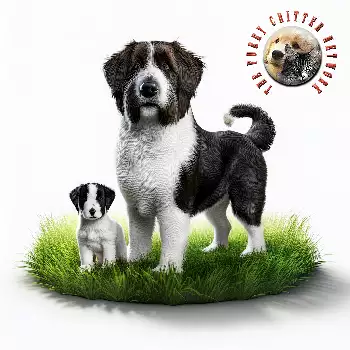The history of the Dutch Stabyhoun is inextricably linked to the rural farming communities of Friesland, where this versatile breed developed over centuries as an indispensable helper to small farmers and hunters. The breed's origins can be traced back to at least the early 1800s, though oral traditions suggest an even earlier presence in the region. These dogs emerged from the practical needs of Frisian farmers who required a single dog capable of performing multiple tasks: hunting various game, controlling vermin, guarding property, pulling small carts, and serving as a gentle companion for children.
Historical documents from the 19th century, including paintings and written descriptions, depict dogs remarkably similar to today's Dutch Stabyhoun working alongside Frisian farmers. The famous Dutch artist Jan Steen included dogs resembling Stabyhouns in several of his paintings from the 1600s, suggesting the type may have existed even earlier than documented records indicate. These early dogs were valued not for their pedigree but for their working ability, with breeding decisions based purely on performance and temperament rather than appearance.
The geographic isolation of Friesland played a crucial role in the breed's development, as limited outside influence allowed for the establishment of a consistent type through natural selection and practical breeding choices. The harsh climate and challenging terrain of the region, with its extensive wetlands, forests, and agricultural areas, shaped a dog that was hardy, versatile, and capable of working in diverse conditions. Farmers typically kept only one or two dogs due to economic constraints, so each animal needed to excel at multiple tasks to justify its keep.
During the 19th and early 20th centuries, the Dutch Stabyhoun remained primarily a working farm dog, unknown outside its native region. The breed worked in close partnership with another Frisian breed, the Wetterhoun, with farmers often keeping one of each breed to complement each other's abilities. While the Wetterhoun specialized in water work and had a more assertive temperament, the Dutch Stabyhoun was valued for its gentler nature and versatility on land. Interbreeding between these two breeds was common during this period, as farmers prioritized function over pure breeding.
The period following World War II marked a critical turning point in the breed's history. The mechanization of agriculture and changes in hunting practices reduced the demand for working farm dogs, and the Dutch Stabyhoun population declined dramatically. By the 1940s, the breed was in serious danger of extinction, with only a handful of dogs remaining and continued crossbreeding with Wetterhouns threatening to eliminate the distinct Stabyhoun type entirely.
Salvation came through the efforts of dedicated breed enthusiasts who recognized the cultural and genetic value of preserving this ancient Frisian breed. In 1942, during the German occupation of the Netherlands, a group of fanciers led by Mr. J. Bos began efforts to preserve and restore the Dutch Stabyhoun as a distinct breed. Despite the challenging wartime conditions, they began documenting existing dogs, establishing a studbook, and working to eliminate crossbreeding with Wetterhouns.
The Nederlandse Vereniging voor Stabij- en Wetterhounen (NVSW) was officially established in 1947, taking responsibility for both Frisian breeds. The organization implemented strict breeding guidelines to preserve genetic diversity while maintaining breed type. Every potential breeding animal had to be evaluated not only for conformation but also for temperament and working ability. This comprehensive approach helped ensure that the Dutch Stabyhoun retained its essential characteristics even as its role shifted from working dog to companion animal.
The 1960s saw the formal separation of the Dutch Stabyhoun and Wetterhoun breeding programs, with the last official cross between the breeds recorded in 1942. From this point forward, the Dutch Stabyhoun was bred pure, though the limited gene pool required careful management to avoid inbreeding problems. The NVSW implemented one of the earliest computerized breeding programs in dogs, tracking genetic relationships and making breeding recommendations to maintain maximum genetic diversity.
International interest in the Dutch Stabyhoun began to grow in the 1980s and 1990s, though the NVSW maintained strict control over breeding to prevent the commercialization and potential deterioration of the breed. Export of dogs was limited and carefully monitored, with foreign breeders required to adhere to Dutch breeding guidelines. This cautious approach helped maintain breed quality but also kept population numbers relatively low.
The establishment of breed clubs in other countries during the late 20th and early 21st centuries helped expand the Dutch Stabyhoun population while maintaining breeding standards. The United Kingdom, United States, Finland, Sweden, and Denmark established breeding programs under NVSW guidance, helping to secure the breed's future through geographic distribution of the gene pool. These international programs remained small and focused on preservation rather than popularization.
Modern DNA studies have provided valuable insights into the Dutch Stabyhoun's genetic heritage, confirming its status as one of the rarest dog breeds globally. Research has shown the breed maintains reasonable genetic diversity despite its small population, testament to the careful breeding management implemented by the NVSW. These studies have also helped identify genetic markers for certain health conditions, allowing for more informed breeding decisions.
Today, the Dutch Stabyhoun remains one of the rarest dog breeds in the world, with a global population estimated at fewer than 7,000 dogs. The breed has achieved recognition from various international kennel clubs, including the FCI, UKC, and inclusion in the AKC's Foundation Stock Service. Despite growing international interest, the NVSW continues to oversee breeding programs worldwide, ensuring that expansion of the breed doesn't compromise its health, temperament, or working abilities.
The transformation of the Dutch Stabyhoun from farm dog to family companion has been remarkably successful, with the breed adapting well to modern life while retaining its essential characteristics. Contemporary Stabyhouns still display the versatility, intelligence, and gentle nature that made them invaluable to Frisian farmers centuries ago. The breed's history serves as a model for successful rare breed preservation, demonstrating how dedicated enthusiasts can save a breed from extinction while maintaining its unique qualities and cultural significance.

